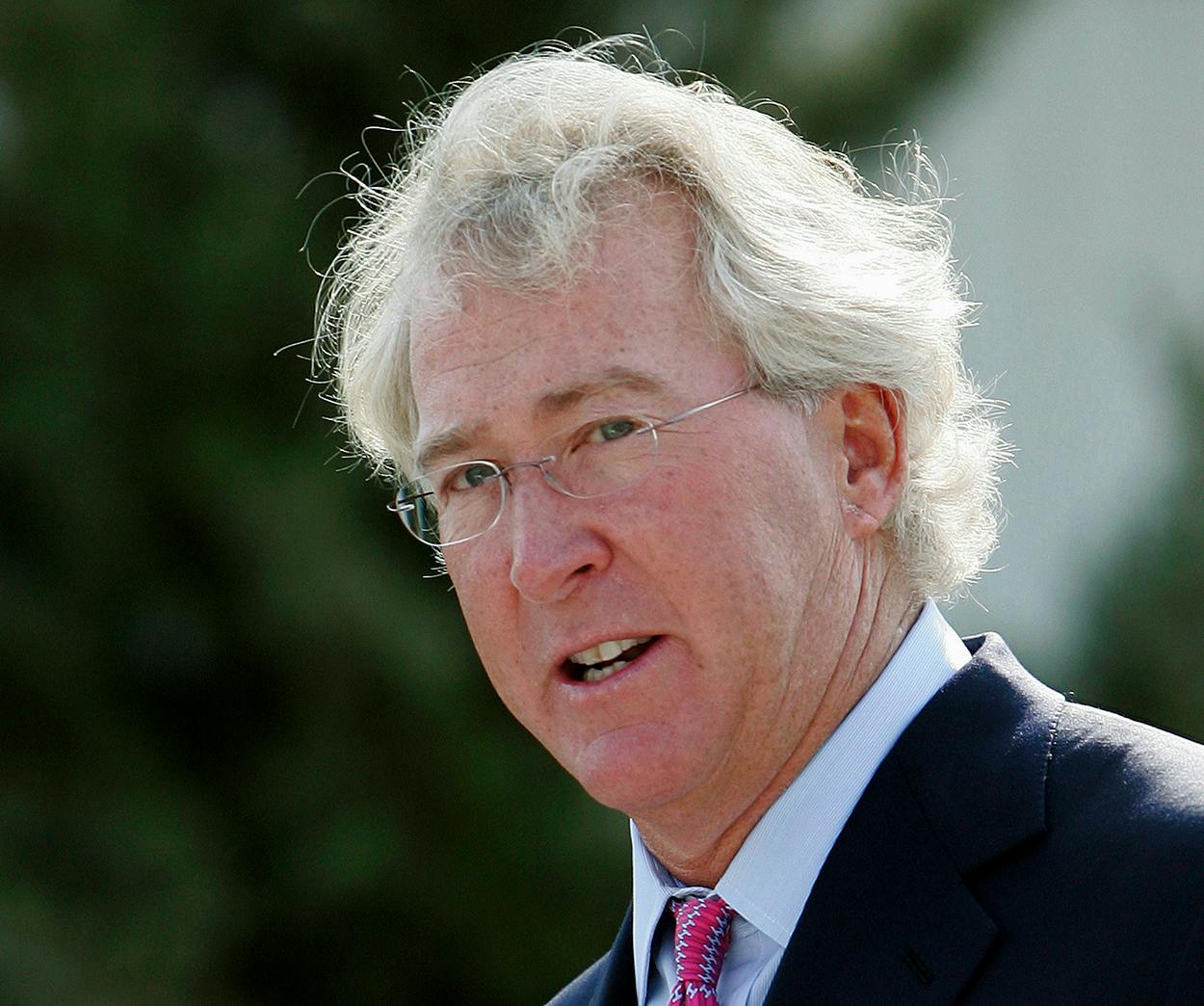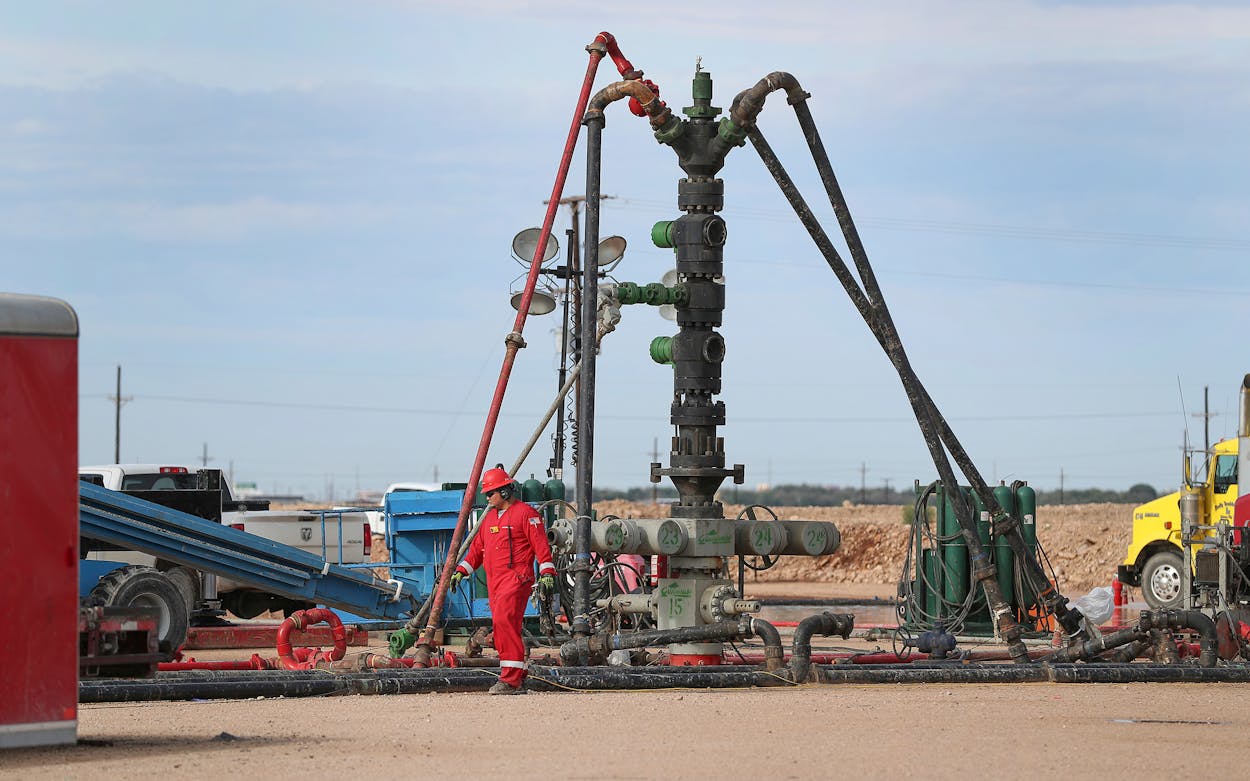Fracking is big business in our state, but especially in West Texas, where the shale revolution has taken over. Young CEOs, dubbed “shalennials” by Bloomberg, are building million dollar fortunes flipping oil leases in the Permian Basin, but as business journalist Bethany McLean explains, these fortunes are built on an industry with an unstable future. In her new book, Saudi America: The Truth About Fracking and How It’s Changing the World, McLean chronicles the story of Aubrey McClendon—a key player in the shale boom—and explores the reality behind the United States’ quest to become energy independent. Texas Monthly spoke with McLean about what we can learn from McClendon, how the Permian Basin saved fracking, and how long the industry will last.
Texas Monthly: What inspired you to write this book?
Bethany McLean: I guess there were two things that I’ve been obsessed with for a while. One is Aubrey McClendon. I just think he is one of those astounding characters in American business that comes along every so often. Salesman extraordinaire, who tries to change the world, who’s loved and hated in equal measure by those he touches. I’ve been interested in him since 2010. And then the other was this dichotomy that I was obsessed with: how could it be that shale oil and gas is changing the world, reshaping geopolitics—the Energy Information Administration just put out a report that the U.S. is now the world’s largest producer of crude oil, ahead of Russia and Saudi Arabia—and yet it doesn’t make money? These companies, taken as a whole, don’t produce cash flow. I thought, “how can those two things coexist?” And I wanted to explore that.
TM: Why was McClendon your pathway into talking about how fracking grew in the U.S.?
BM: I was not going to take on the environmental question surrounding fracking. The key ingredient in fracking isn’t chemicals, which is what most people think, it’s actually capital. Because these companies don’t make money, they’re reliant on the capital markets and other investors to finance them, to pour billions of dollars into them so they can keep drilling.
Aubrey McClendon wasn’t the technological pioneer of fracking—most people agree that that credit goes to a guy named George Mitchell—but he was the father of capital raising for fracking. He is the guy who went around the world convincing investors everywhere to put money into U.S. shale. Since I wanted to write about the financial side, he seemed to me like the perfect character to personify that.
TM: McClendon’s story is really fascinating, but also ends tragically and abruptly. What can we draw from his experiences?
BM: That’s part of what I think is a little bit inconclusive in the book. When Aubrey McClendon died in the spring of 2016, American shale was flat on its back. Some people saw Saudi Arabia’s decision in the fall 2014 not to cut production as a deliberate attempt to kill U.S. fracking, because it would keep oil prices low and some hundred and fifty companies ended up going bankrupt. When McClendon died, it was like the punctuation mark saying this industry is over. McClendon died with his estate a mess—two years later creditors are just finishing trying to sort out who will get paid and who won’t get paid. It looks like he essentially died bankrupt, and he was once one of the richest men in America. And I thought that tells one side of the shale story. But thus far, shale has been much more resilient than anybody would have dreamed because the industry actually came back after that. So, McClendon’s story is part of how that all started, but it doesn’t necessarily mark the end of it.

TM: Was one of the reasons shale came back after McClendon’s death the Permian Basin?
BM: Yep. It’s funny, because it was no secret that there was oil in the Permian, right? We’ve known that since oil drilling started in this country and the Permian was a huge source of the supply of the oil used in World War II, but people thought the Permian was sort of tapped out. Even when fracking started in places like North Dakota’s Bakken, and then Eagle Ford Shale, people were late to sort of look to the Permian. As one oil guy said to me, the Permian is the girl next door—it’s that thing you’ve looked at for so long, it takes you a while to realize it’s gonna be interesting. The Permian has turned out to yield immense oil via fracking and at a lower price than other places where fracking has been.
TM: This resurgence is taking place, but it’s still not profitable, so how does this industry keep moving forward?
BM: I cite some analysis that shows that between 2012 and mid-2017, the top sixty shale companies in the U.S. lost a combined $9 billion every quarter. A Wall Street Journal analysis showed that in the first quarter of 2018, only five companies produced positive free cash flow. So, it continues in part because of people’s belief that the industry, that technological advances, plus the Permian, are going to put the industry on a sounder financial footing—that it’s just analogous to Amazon or Uber or any company that requires tons of investment before it starts to become profitable. But the other reason it’s come back is because Wall Street is still there. Interest rates remain super low in the wake of the financial crisis and that’s had a couple of effects. It’s made it easy for companies to raise money in the debt market, and it’s created a huge hunger for a return among investors who would normally be putting their money into fixed income investments like pension plans, but because they can’t earn a return, they’ve been instead giving their money to financial players like private equity firms, who, in turn, have been investing a big chunk of their money into shale. A big part of my argument in the book is that you have to understand the finances of this as much as you have to understand the geology. This is a Wall Street story in ways people don’t really understand.
TM: The average person tends to hear more about the environmental aspects of fracking than about the financial realities of it. It might be a bit more effective in challenging the industry if people knew that it wasn’t that profitable.
BM: Right. Maybe I’m cynical, but I also believe that if anything is going to stop fracking, it probably isn’t going to be environmental concerns. It would be because the money dries up. Maybe that’s a cynical view of the world. Not because the environment isn’t important, but as long as there’s a demand for hydrocarbons and somebody’s willing to pay to get them out of the ground, they’ll keep coming out of the ground. I am always fascinated by stories where there’s an untold component to them and that’s part of what made me so interested in this.
TM: In the book, you mention the potential for oil to be a geopolitical force. How much is that adding to the push that keeps fracking alive?
BM: I don’t think we have enough of a policy for it to. We don’t have any policy around this and that actually is one of the questions that I thought about with this book. If it doesn’t make money and the capital drives up, will we, as a matter of geopolitics, want to fund fracking in order to keep our supply of natural oil and gas flowing? I think the answer to that is no, for various reasons, but I think that just understanding that the financial element of this poses a risk. There’s a lot of chest beating about American energy independence and how great this is, and I think it’s a really flawed concept for a lot of reasons, but not the least of which is the shaky financial footing the industry is on.
TM: What does the future of fracking look like?
BM: Ultimately, I think it was arrogant of me to believe that I could be able to figure it out and I don’t think I get there in the book. One thing that I learned is that everybody whose attempted to predict the direction of this thing has been wrong. And in general, if you look at the history of oil price forecasting, everybody who’s ever made a prediction about the future price of oil has been wrong too. I wouldn’t bet on the answer to that. I think it’s calculus rather than algebra, and the price of oil—which is set by so many events around the globe that are impossible to control or predict—is part of the calculus. In the end, I decided it would be the height of arrogance to try to predict.
TM: You mention in the book that the idea of energy independence has kind of been wrapped up in the concept of “Make American Great Again.” Might there be change in that while this administration is in office?
BM: I don’t know. The Obama administration was very wary of using energy as a weapon, because we essentially tell Russia not to use energy as a weapon. And so for us to do that would be the height of hypocrisy. I hope that’s not the direction we turn for the simple reason that I think energy independence is a flawed concept because of this weak financial underbelly to the shale revolution. Also, the price of a barrel of oil is set globally. We’re not going back to the 1970s, when the U.S. could control the price of a barrel of oil. It’s set by global forces. And so, for us to pretend that somehow we can produce sufficient energy to cover our own needs, that we’re immune from forces around the globe is kind of silly.
We’re part of a global economy. We have an interest in a safe and prosperous Middle East regardless of whether or not we as a country are directly dependent on their oil. This whole notion of striving for energy independence—which, by the way, has been a goal of every president dating back to the 1970s—is kind of a silly goal in many ways. It’s a false goal when you try to think it through.








